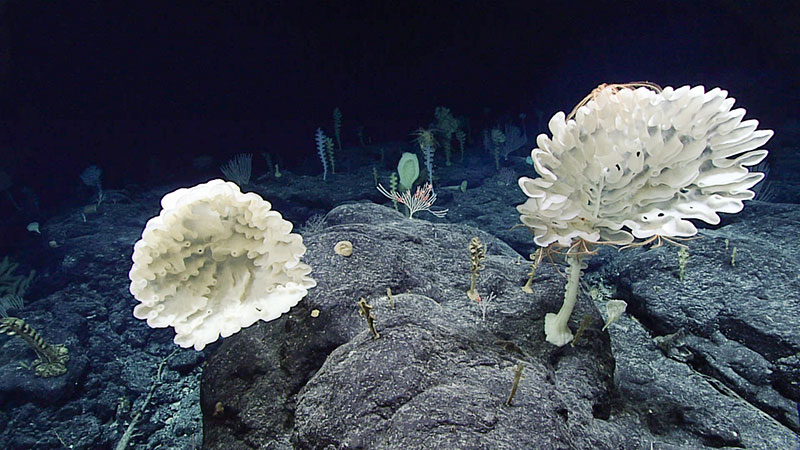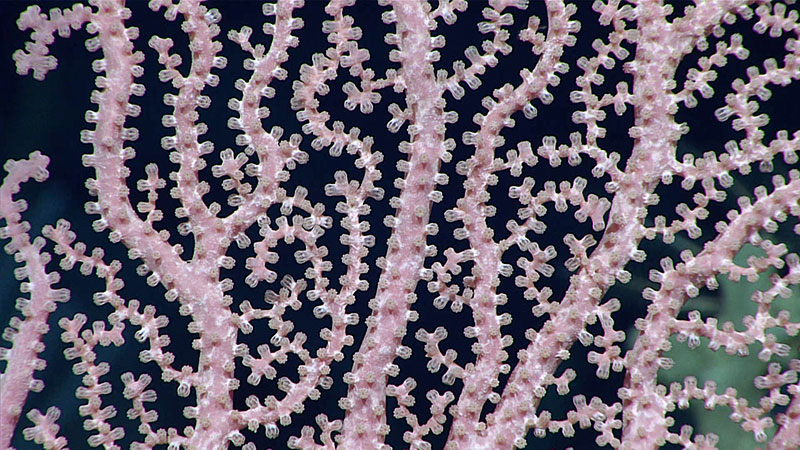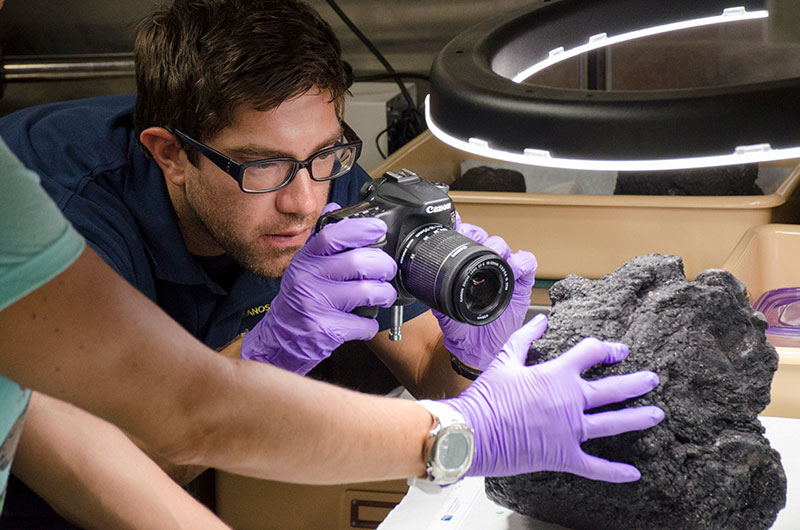-

Farreid glass sponges are visible in the foreground of this fairly high-density sponge community found at about 2,360 meters (7,740 feet) depth. Corals were also present, but in lower abundance. Iridogorgia and bamboo coral are in the background. Image courtesy of the NOAA Office of Ocean Exploration and Research, 2017 Laulima O Ka Moana. Download larger version (jpg, 1.5 MB).
-

This pink precious Hemicorallium in the family Coralliidae, found at ~2,400 meters (~7,875 feet), had most of its tentacles drawn in. Image courtesy of the NOAA Office of Ocean Exploration and Research, 2017 Laulima O Ka Moana. Download larger version (jpg, 1.7 MB).
-

Matt Dornback, from the NOAA National Centers for Environmental Information, photographs a rock sample from the day’s dive. Rock samples are being collected during most dives for later age-dating and geochemical analysis to provide more information about the geologic history and age of seamounts in the Johnston Atoll Unit. Image courtesy of the NOAA Office of Ocean Exploration and Research, 2017 Laulima O Ka Moana. Download larger version (jpg, 12.4 MB).